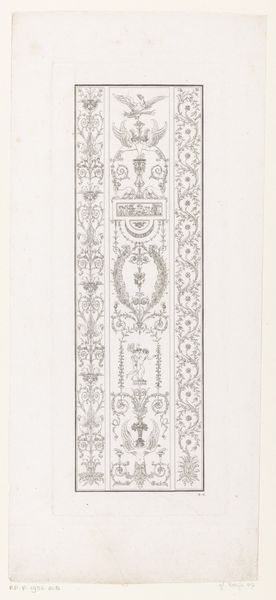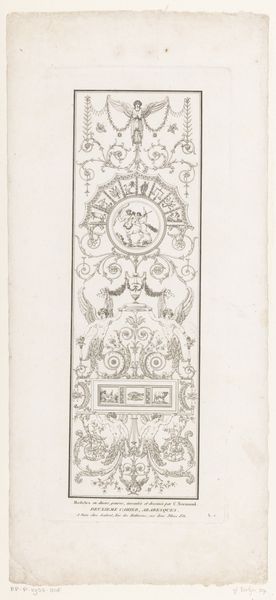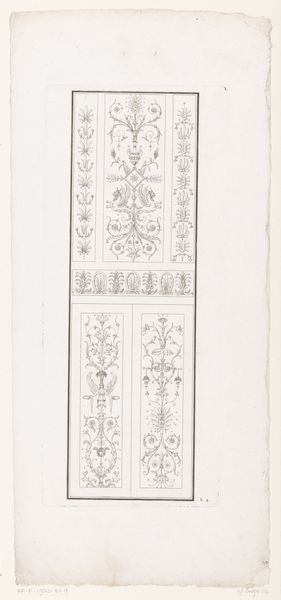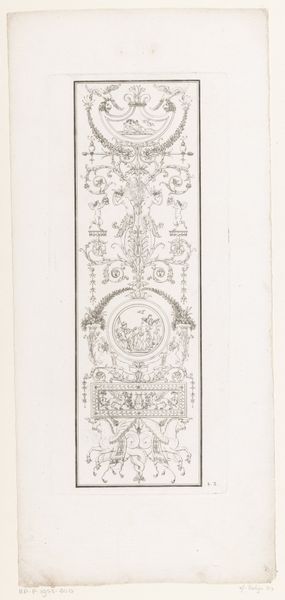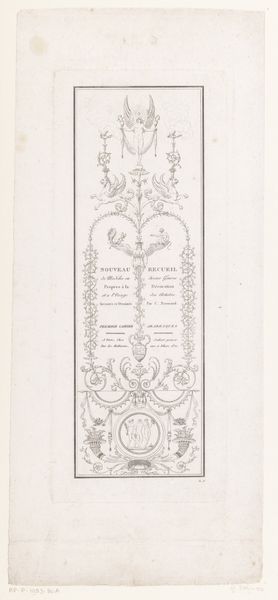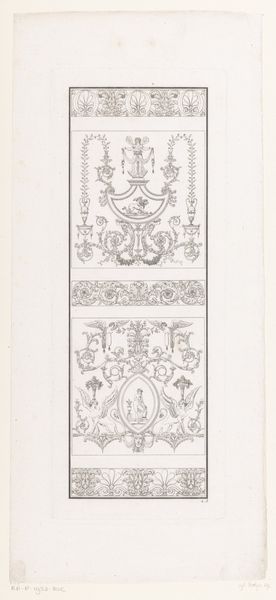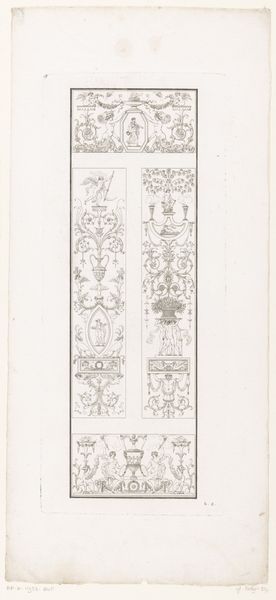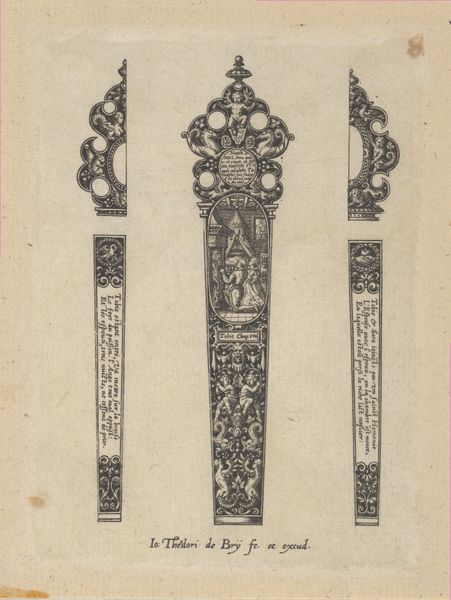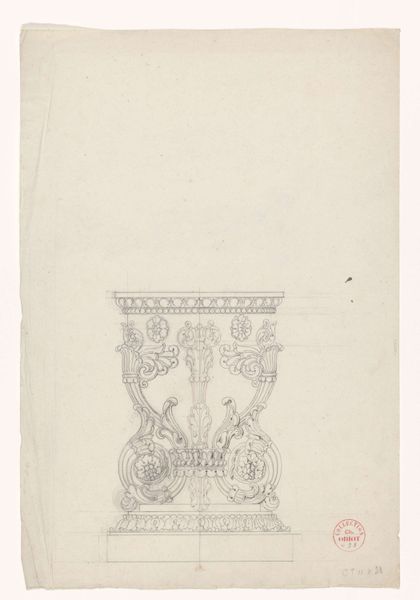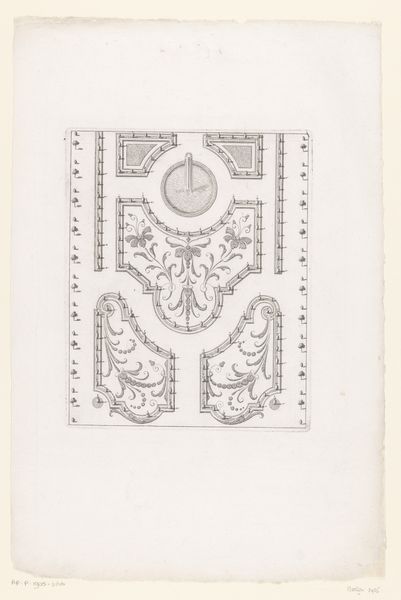
Dimensions: height 362 mm, width 138 mm
Copyright: Rijks Museum: Open Domain
Editor: This is "Arabesken met putto en engel" or "Arabesques with putto and angel" by Charles Pierre Joseph Normand, created in 1803. It’s an ink drawing or engraving. The detail is amazing! What strikes me is the precision and the almost mathematical quality of the repeated motifs. It's very orderly. How do you interpret this work, looking at its structure? Curator: Indeed, its structure is key to understanding the work. Observe how the vertical format is rigorously divided into distinct zones, each showcasing variations on recurring motifs: botanical elements, urns, and figures, all meticulously rendered in ink. The consistent line weight and density create a visual rhythm. There is very little tonal variation. Editor: It seems like every element, even the seemingly free-flowing arabesques, is carefully calculated and balanced. Is there a hierarchy within this design? Curator: Consider the placement of the angel figure near the bottom, enclosed within an oval. It’s a focal point, grounding the more abstract elements above. The symmetrical arrangement, however, is the governing principle. Do you notice any disruptions or unexpected elements within this strict symmetry? Editor: Not really, it's like a well-ordered garden or architectural plan from the period. What strikes me is the consistent rendering and lack of expressive line variation which make it difficult to establish a vantage point. Curator: Precisely. Normand seems interested in showcasing his technical mastery, prioritizing balanced composition over narrative or emotional depth. By isolating those artistic characteristics, and excluding context, one can attempt to consider the intentions or artistic influences. It speaks volumes of Neoclassical ideals prevalent during that time, particularly its emphasis on order and rationality. Editor: I see now how the piece celebrates restraint and exactness through geometric composition and precise lines. I might have missed it focusing only on the subject matter! Curator: Examining an artwork from a structural perspective highlights how even seemingly decorative works reflect underlying aesthetic and philosophical principles. There is more to explore, I think, here in surface texture!
Comments
No comments
Be the first to comment and join the conversation on the ultimate creative platform.
